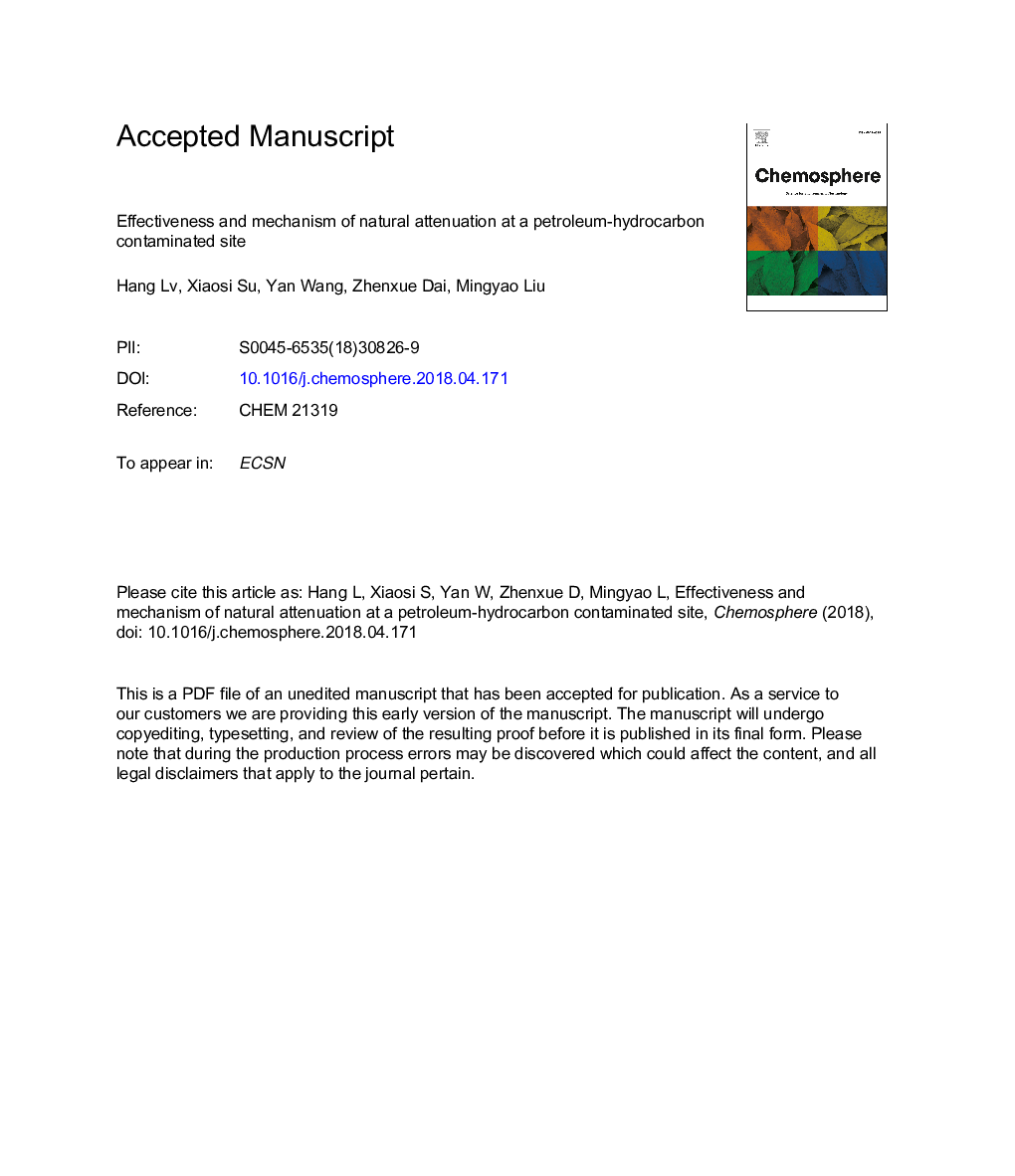| Article ID | Journal | Published Year | Pages | File Type |
|---|---|---|---|---|
| 8850848 | Chemosphere | 2018 | 31 Pages |
Abstract
This study applied an integrated method for evaluating the effectiveness and mechanism of natural attenuation (NA) of petroleum-hydrocarbon contaminated groundwater. Site groundwater and soil samples were analysed to characterize spatial and temporal variations in petroleum hydrocarbons, geochemical indicators, microbial diversity and isotopes. The results showed that the area of petroleum hydrocarbon contamination plume decreased almost 60% in four years, indicating the presence of natural attenuation. The 14C content and sequence analysis indicate that there are more relatively 'old' HCO3â that have been produced from petroleum hydrocarbons in the upgradient portion of the contaminated plume, confirming that intrinsic biodegradation was the major factor limiting spread of the contaminated plume. The main degradation mechanisms were identified as sulfate reduction and methanogenesis based on the following: (1) more SO42- have been consumed in the contamination source than downgradient, and the δ34S values in the resident SO42- were also more enriched in the contamination source, (2) production of more CH4 in the contamination source with the δ13C values for CH4 was much lower than that of CO2, and the fractionation factor was 1.030-1.046. The results of this study provide significant insight for applying natural attenuation and enhanced bioremediation as alternative options for remediation of petroleum-hydrocarbon contaminated sites.
Related Topics
Life Sciences
Environmental Science
Environmental Chemistry
Authors
Hang Lv, Xiaosi Su, Yan Wang, Zhenxue Dai, Mingyao Liu,
